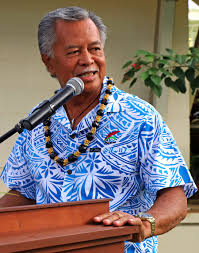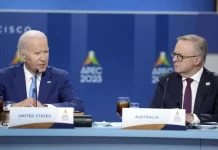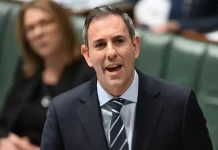By Dionisia Tabureguci
Marked increases in the frequency and intensity of natural disasters in the Pacific region are forcing a rethink of ways to build better resilience into telecommunications infrastructure in the region, said Henry Puna, Secretary General of the Pacific Islands Forum Secretariat in Suva.
Puna was keynote speaker at the 26th Annual General Meeting’s Business Forum and Expo of the Pacific islands Telecommunications Association (PITA) held in person in Nadi, Fiji for the first time after three years.
The event’s underlying theme was: “Addressing the Challenges for Accelerating the Digital Adoption and Disaster Readiness in the Pacific”.
“A key focus area is infrastructure. The nature of the sector is such that it requires immense investments, whether it is for fixed line or mobile networks. Adding to this is the complexities around addressing issues like financing and ownership, access and pricing and human and institutional capacities,” said Puna, who served as Prime Minister and Minister for Telecommunications in the Cook Islands before joining the region’s premier organization.
“The volcanic eruption in Tonga earlier this year again demonstrated our vulnerability. It also highlighted the fragility of the modern day Internet and threats to infrastructure from national disasters.
As a region prone to natural disasters, its frequency and severity are increasing due to climate change and also increases the incidence of damages that these events bring about. While some countries are serviced by many submarine cables, countries like Tonga and others have the lone undersea cable that connects the country to the rest of the world and this was unfortunately damaged during the eruption.
This revealed the huge financial and social consequences for the countries and underscores the importance of full security and redundancy. I believe it has been an important lesson for future investment in ICT infrastructure in our region. We have to factor in worst case disaster scenarios into our infrastructure investment plans to ensure they withstand severe disasters,” Puna said.
He welcomed the deployment of Gondwana-2, New Caledonia’s second telecommunications submarine cable which will link its main service provider OPT-NC to the world via the FINTEL landing in Vatuwaqa.
Gondwana-2 will complement the existing Gondwana-1, which links OPT-NC to Sydney.
“This is a milestone, not just for Fiji and New Caledonia but for the whole Pacific, demonstrating vision and opportunities,” said Puna.
“This new cable can boost regional approaches and develop regional digital cooperation by increasing private sector activities and investments and creating jobs in data centers, business processing centers, cloud services and encouraging more start-ups. We look to Fiji’s Business Processing Outsourcing industry which employs around 3000 Fijians and contributes approximately FJD$70m (US$35 million) in foreign exchange annually, according to Investment Fiji.”
The PIFS-SG also invited PITA member companies to explore avenues of collaboration with PIFS, especially under the 2050 Strategy for the Blue Pacific Continent, to be be launched mid-year this year by Pacific leaders, and the Pacific Aid-for-Trade Strategy 2020-2025, which is the blueprint for PIFS’ regional trade work.
“Some key features in this strategy are: E-Commerce, Quality Infrastructure, Trade facilitation and Services. These are for comprehensive connectivity to promote Pacific trade and private sector development, of which telecoms and ICTs can be a game-changer. E-Commerce is a priority under the Pacific-Aid-for-Trade strategy. It has the potential to address some of our most binding constraints. For certain industries, e-commerce can eliminate the tyranny of distance. For example, the Business Processing Outsourcing industry, certain types of cultural industries, and even segments of the tourism sector,” Puna said.
“However, it isn’t only money that the Pacific needs to implement this strategy. Identifying and attracting the right private sector partners is equally, if not more, important. And I take this opportunity to reach out to the PITA members, knowing this includes business entities and firms in the U.S, Europe and Asia. Within a partnership building exercise, PITA members can make a real difference for our Pacific.”
Puna also recognised the contribution and capacity of Pacific private sector players to support regionalism, citing Fiji’s Amalgamated Telecom Holdings as an example.
“As a public company listed on SPSE in Fiji, it has mobile networks in American Samoa, Cook Islands, Fiji, Kiribati, Samoa and Vanuatu and also operates a philanthropic foundation here in Fiji. While this is an expansion strategy of the Group, it also reinforces and demonstrates the Pacific’s private sector’s capacity to support regionalism. It also shows that Pacific countries could work together with telecommunication companies and donors to build more robust and secure telecommunications networks and markets. There is great momentum and uptake of telecommunications and ICTs, building on from the pandemic. This will accelerate our region’s readiness for technology and e-commerce and will provide new avenues for genuine development to Pacific consumers and businesses,” he said.
This year’s PITA AGM is a three-day event that for the first time is held under a “hybrid” format, where speakers and participants can either attend in person or online.
SOURCE: PACNEWS















